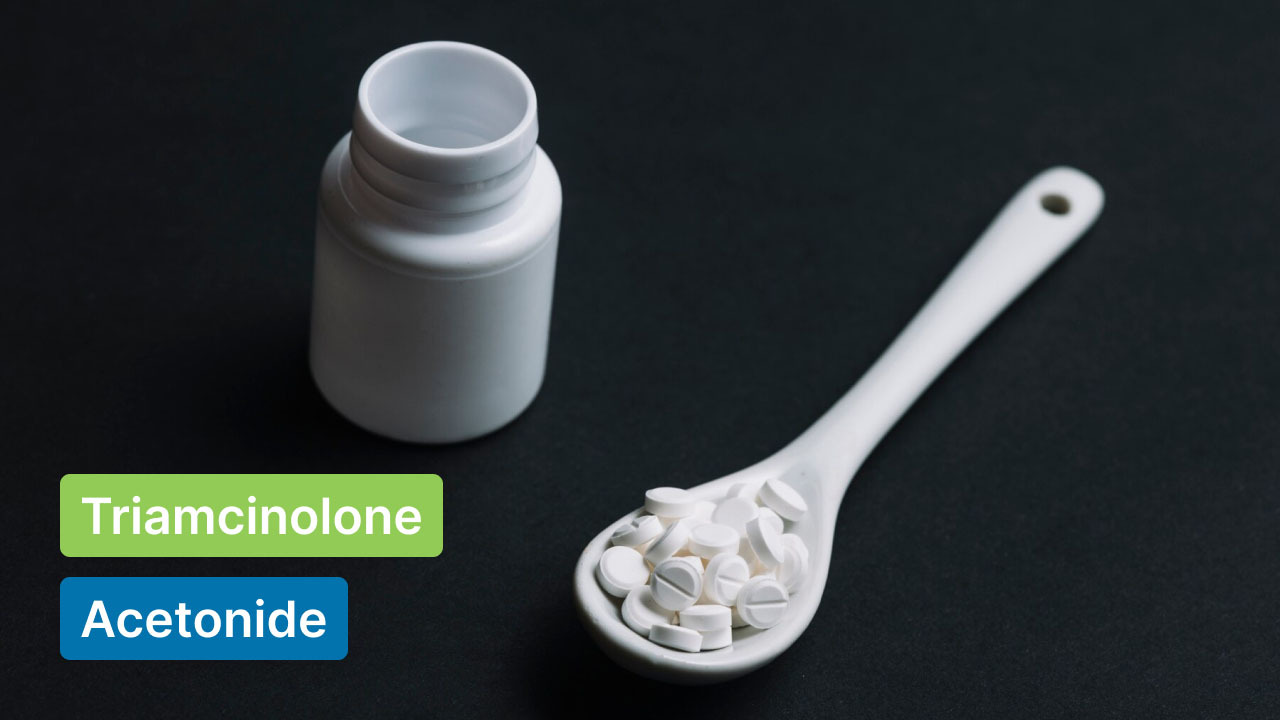
UTIs, or Urinary Tract Infections, are a common health concern affecting millions globally, especially women. UTIs are mainly caused by bacteria, and the standard treatment for such conditions involves antibiotics that primarily target killing bacteria.
Some antibiotics may include amoxicillin, ciprofloxacin, or trimethoprim-sulfamethoxazole (TMP-SMX). Another form of antibiotic that is trending for UTIs is Metronidazole (Flagyl®). While this antibiotic is effective against bacteria, it's not a first-line treatment for UTIs. But what is Metronidazole?
Metronidazole is a strong prescription antibiotic commonly used in the treatment of vaginal, skin, stomach, heart, blood, and bone infections. Doctors usually prescribe only Metronidazole for UTI in cases where patients have extremely resistant nongonococcal urethritis.
If you're wondering whether it's right for UTI, keep reading. This article gives an overview of this antibiotic to help you address common questions like “Can metronidazole treat UTIs?”.
What is Metronidazole?
Metronidazole belongs to a class of drugs known as nitroimidazole antimicrobials. It works by halting the growth of infectious bacteria.
Metronidazole has received approval from the US Food and Drug Administration (FDA) for treating anaerobic and protozoal infections. Its antimicrobial effects are achieved by generating toxic free radicals that are harmful to the targeted microorganisms.
Metronidazole or Flagyl® is also used in the treatment of stomach and intestinal infections, dental abscesses, and heart infections. It does not treat yeast infections or infections caused by viruses (such as the common cold flu).
Metronidazole comes in both oral and vaginal routes. They could be tablets, creams, and gel.
Can Metronidazole Treat UTI?
To address this question, let’s first get a quick overview of UTI.
Urinary Tract infection (UTI) is a condition that affects the parts of the urinary system, including the urethra, bladder, and kidneys.
Globally, there are over 400 million UTIs a year, and this number keeps rising. In particular, it affects roughly 20% of women aged 65 or older.
In most cases, UTIs are caused by bacteria that enter through the stool or poop. The primary cause of UTIs is Escherichia coli (E. coli), and its spread may have fatal consequences. That's why it's important to treat it as soon as possible.
Speaking of treatment, antibiotics are the go-to options for treating UTIs. Some of the common antibiotics include Nitrofurantoin (Macrobid, Macrodantin), Ciprofloxacin (Cipro), and Trimethoprim/sulfamethoxazole (Bactrim, Septra).
Metronidazole should not be used to treat E.coli UTI. As a powerful antibiotic, it is usually prescribed to treat infections caused by parasites and anaerobic bacteria. Thus, it is not needed to treat a common urinary bacterial infection.
Metronidazole functions by killing infectious bacteria. The replication process of all bacteria involves the synthesis of proteins under the guidance of the host's DNA. Flagyl disrupts this process, inhibiting protein synthesis and the interaction of microorganisms with the DNA, causing the bacteria to die.
Flagyl is mostly prescribed for recurrent and persistent nongonococcal urethritis, although it wasn't meant to treat UTIs. This drug could kill the bacteria causing urethritis within seven to ten days.
The good thing is that in some women, a UTI can resolve itself without the need for antibiotics. Most uncomplicated UTIs can be treated easily with a short course of oral antibiotics.
How is Metronidazole Taken?
Before starting the treatment with Metronidazole, you must follow the prescribed dosage and duration of treatment to avoid recurrent infections. Read the manufacturer's label carefully or ask your doctor to explain if you don't understand.
The length of treatment for a UTI usually can range from a single, one-time dose to a course of medication over 5 to 7 days.
Generally, the severity and type of the disease will determine the form of Metronidazole your doctor recommends and the dosage and duration of treatment.
1. Metronidazole – Oral route
Metronidazole tablets are sold under the brand names Flagyl® (immediate-release) and Flagyl ER (Extended-release). They are available in oral pills, extended-release tablets, and capsule forms.
Just take the tablet with a glass of water. You can also take it with food. Certain infections can be cured with a single dose, whilst others may require a two-week treatment. Doses for children are smaller and adjusted according to their age and weight.
In the case of UTI, the course of treatment usually lasts for seven to ten days.
Note that even if your symptoms get better, you should still complete the entire course of antibiotics before stopping treatment to mitigate the risk of recurring infections or the emergence of antibiotic-resistant bacteria.
If you happen to miss a dose, take it as soon as you remember. Space out the rest of your doses evenly throughout the day. Avoid doubling up on doses to compensate for a missed one as Metronidazole is very strong.
Keep in mind that Flagyl should only be taken under the supervision of a professional doctor. This is because its overuse or misuse can lead to antibiotic resistance and side effects. Not only that, it may worsen your UTI symptoms if not taken properly.
Most doctors do not prefer oral Metronidazole as it may compromise the treatment of UTIs. They may prescribe metronidazole gel.
2. Metronidazole (Vaginal Route)
To treat bacterial vaginosis (BV), use an applicator to apply metronidazole gel (Metrogyl) directly into the vagina for targeted and effective treatment.
The typical dose is one full applicator every night for the course of 5 days. Follow the instructions mentioned in the package when taking your medication. This will explain how to insert the applicator into your vagina after filling it with gel.
The standard dosage for Metronidazole vaginal gel often involves the application of a specified amount, usually once or twice daily.
How to use it:
- Lie down on your back with your knees bent (or whatever position that you feel comfortable).
- Hold the entire applicator with one hand and gently insert it into the vagina. (If you feel uncomfortable, stop it.)
- Gradually press the plunger until it stops.
- Retrieve the applicator, leaving the medicine in the vagina.
- Remove the applicator and throw it. Use each applicator only once.
Be cautious not to get metronidazole gel (Metrogyl) in your eyes, mouth, or on your skin. In case of contact with your eyes, rinse them with cool water and seek help from your doctor.
Do not forget to wash your hands before and after using it. Also, do not engage in vaginal intercourse or use other vaginal items including tampons or douches while using this vaginal gel.
Similar to oral Metronidazole, patients using the vaginal gel should complete the entire prescribed course, even if symptoms improve before completion.
In some cases, healthcare providers may recommend a combination of oral Metronidazole and vaginal gel for more comprehensive treatment.
Side Effects of Metronidazole
In addition to their beneficial effects, Metronidazole medication may cause unpleasant side effects, even though not every individual experiences them. Some of the common side effects are:
- Headache
- Stomach upset
- Nausea and vomiting
- Gas, diarrhea, or constipation
- A metallic taste in your mouth
- Loss of appetite
- Dark and foul smelling urine
- Sore throat
- Painful urination
- Abdominal pain
- Unusual vaginal discharge, itching, or odor
More serious side effects include seizures, mood swings, vision problems, peeling or blistering skin, dizziness, numbness, and swelling of the face, throat, or tongue. Severe allergic reactions may also occur but in rare cases.
If you develop any other symptoms that you believe are related to this medication, see your doctor or a healthcare professional right away.
Note: Pregnant women must avoid taking Metronidazole as it may cause congenital abnormalities in unborn children. Hence, if you are pregnant or considering pregnancy, make sure to discuss this with a healthcare practitioner before taking this medication.
Alternatives to Metronidazole
Since Metronidazole is not the preferred antibiotic to treat UTIs, they are rare. Besides, it's not effective and comes with many side effects as we discussed before.
Alternatives may be prescribed based on the type of bacteria causing the infection, the patient's medical history, and other individual factors.
To treat your UTIs, you can go for the below antibiotics, which will kill E.coli bacteria, but under the supervision of your doctor:
- Nitrofurantoin (Macrobid, Macrodantin)
- Trimethoprim/sulfamethoxazole (Bactrim, Septra)
- Fosfomycin
- Cephalexin (Keflex)
- Ciprofloxacin (Cipro)
- Levofloxacin (Levaquin).
Based on your urine culture and sensitivity test, doctors will prescribe the best antibiotics accordingly.
Wrapping Up!
Hopefully, this article cleared your doubt on “Can Metronidazole treat UTI?” While Metronidazole is an effective antibiotic with extensive activity, its role in treating UTIs is limited.
Moreover, anaerobic bacteria thrive in environments with little or no oxygen. This makes Metronidazole particularly effective against them.
Standard antibiotics like ciprofloxacin and nitrofurantoin are commonly prescribed for UTIs due to their effectiveness against the prevalent anaerobic bacteria causing UTIs.
If you suspect a UTI or have received a diagnosis from your doctor, it is advisable to explore all available options and discuss them with a healthcare specialist before starting any treatment plan for UTIs.
FAQs
1. What bacteria does Metronidazole treat?
Ans: Metronidazole is used to treat anaerobic bacterial infections and protozoans like Entamoeba histolytica, Giardia lamblia, and Trichomonas vaginalis.
2. Is metronidazole good for BV or UTI?
Ans: Metronidazole is an antibiotic that helps to treat women with vaginal infections like bacterial vaginosis (BV). However, they are not a good fit for treating UTIs.
3. How much Metronidazole do I take for a UTI?
Ans: You should take a metronidazole dose of 7.5 mg per kg of your body weight (mg/kg) every six hours for a course of 7 days.
4. How fast does Metronidazole work for UTI?
Ans: It usually takes a few days for symptoms to improve. Within seven days, you'll notice that Metronidazole, when used as prescribed, can kill the bacteria that cause UTIs.
5. Can I take metronidazole for UTI?
Ans: Metronidazole is generally considered safe and effective but not well-tolerated by many women undergoing UTI treatment. So, Metronidazole is not a preferred treatment option for UTI. Trimethoprim/sulfamethoxazole is the best option for it.
6. What is the best antibiotic for UTI?
Ans: Some of the best antibiotics for UTI include Ceftriaxone, Cephalexin, Doxycycline, Trimethoprim, and sulfamethoxazole (Bactrim, Bactrim DS).
Read Also:









